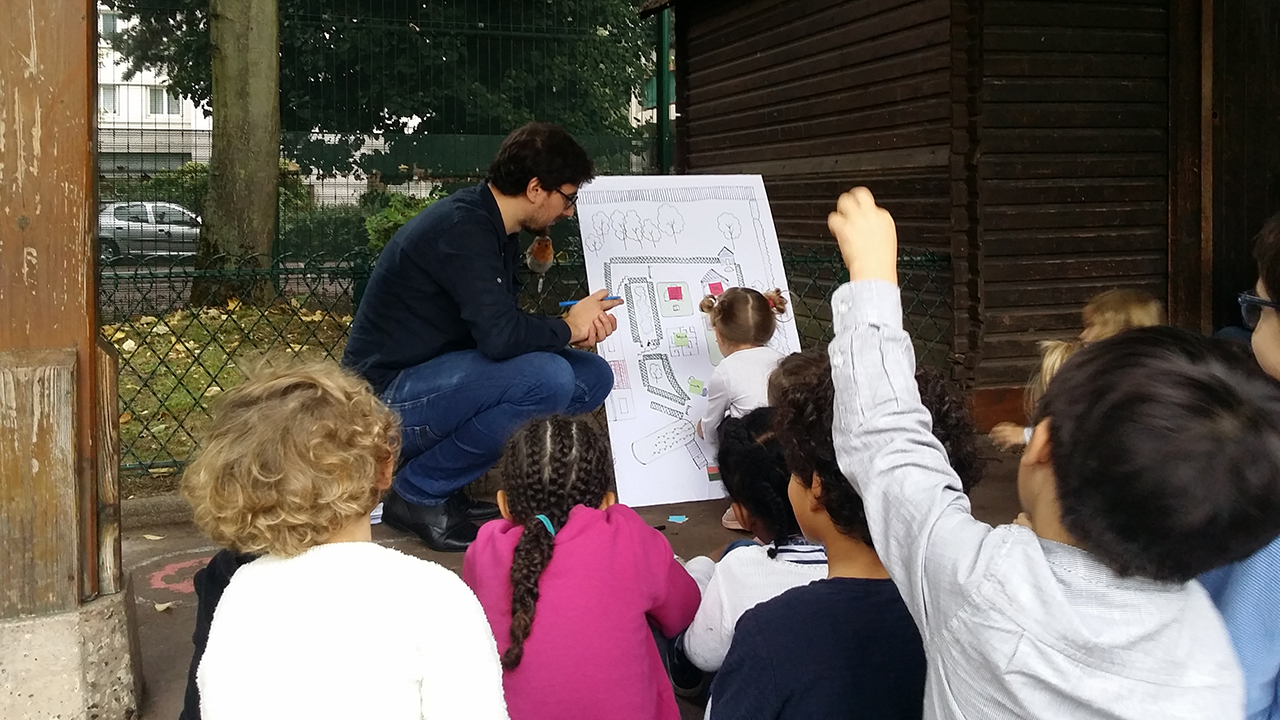PARIS, FRANCE
The Oasis Schoolyard Project

Paris covers an area of 105.4 square kilometres and is inhabited by 2.1 million people. This level of density, coupled with insufficient green space, has spawned two phenomena. One is urban heat islands (UHIs) in the city, which can lead to deadly consequences at times. The other is heightened risk of flooding on occasion of storms. Following workshops for the Resilience Strategy of Paris in 2017, the Oasis Schoolyard Project came into being.
With this initiative, the
city envisions a network of urban oases at the neighbourhood scale. This means
transformation of all 760 public schoolyards, or 73 hectares of asphalted and impermeable
land, into places of climate risk mitigation and social cohesion by 2040. The
fund come straight from the city’s treasury, with subsidies from the State and
another public agency and contribution from the European level. The city has
already transformed 31 pilot schoolyards using sustainable materials and
low-tech nature-based solutions, with participation from schoolchildren. The
renovated spaces now enjoy more vegetation, better management of rainwater, and
play areas better adapted to the children’s needs.
Realising these earlier pilots did not tap deep into the social cohesion aspect, the city has embarked on another round of 10 pilot projects. The purpose is to turn the schoolyards into not only “cool islands” but also get-together places. As every school is located in a community, the schoolyards are expected to serve as venues for local residents to meet and mingle. Therefore, the wider communities outside the schools are engaged into this participatory transformation process, from design to management. This is where other partners join in the endeavour: taking charge of various training sessions, awareness workshops, co-design activities, and assessment.
Out of these processes, a manual for participatory design regarding urban resilience has been developed. Besides, every innovative process is being documented and designed into a tool, method, training module, or best practice. The aim is to develop a toolkit for the transformation of schoolyards to help the city reach its 2040 goal and help other cities learn from its successful experience.
This initiative relates especially to SDGs 11 (sustainable cities and communities), 13 (climate action), and 15 (life on land).


 In Focus | World Cities Day: People-Centred Smart Cities
In Focus | World Cities Day: People-Centred Smart Cities City Stories | Fostering community resilience: A lifeline for the Central African Republic
City Stories | Fostering community resilience: A lifeline for the Central African Republic In Focus | Innovative Education, Empowering Futures
In Focus | Innovative Education, Empowering Futures




















 Tel: +86 020 3780 4434
Tel: +86 020 3780 4434 Email: info@guangzhouaward.org
Email: info@guangzhouaward.org Address: Unit 01-7, 28th Floor, No. 7, Chunrong 3rd Road, Tianhe District, Guangzhou, Guangdong, 510000, PRC
Address: Unit 01-7, 28th Floor, No. 7, Chunrong 3rd Road, Tianhe District, Guangzhou, Guangdong, 510000, PRC




